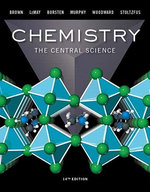?Using the vapor-pressure curves in Figure 11.25, (a) estimate the boiling point of ethanol at an external pressure of 200 torr, (b
Chapter 11, Problem 11.55(choose chapter or problem)
Using the vapor-pressure curves in Figure 11.25,
(a) estimate the boiling point of ethanol at an external pressure of 200 torr,
(b) estimate the external pressure at which ethanol will boil at \(60^{\circ} \mathrm{C}\),
(c) estimate the boiling point of diethyl ether at 400 torr,
(d) estimate the external pressure at which diethyl ether will boil at \(40^{\circ} \mathrm{C}\).
Text Transcription:
60^{\circ} C
40^{\circ} C
Unfortunately, we don't have that question answered yet. But you can get it answered in just 5 hours by Logging in or Becoming a subscriber.
Becoming a subscriber
Or look for another answer
